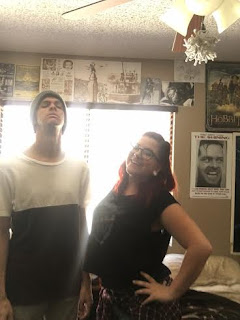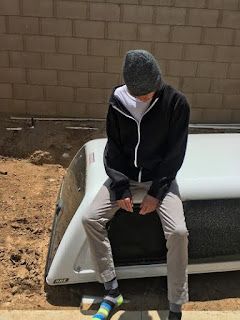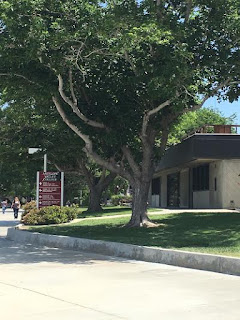Brands matter. Now this isn't a term, it's just a statement. It is important to understand that brands matter. Brands give off a sense of authenticity and they give the product status. People are more likely to buy something name brand because they think that the product is better. The brands we buy send off a certain message about what we want other people to think about us.
Wednesday, May 18, 2016
Interaction Approach
Interaction approach shows the power of informal process like talking can affect the cultural market. Imagine I have a conversation about an amazing product I bought with Branden and he buys the same product and then he tells his friends and they buy it and the cycle continues. Hearing the product is cool and wanted by others makes other people want to go and buy it. We base a lot of what we buy based upon who are surrounded by.
Taste
Taste is affected by culture. Taste refers to a persons preference of music, fashion, cinema, or other types of culture. Social class also plays a part in taste. Someone in a high social class can buy expensive clothing and material goods thus they would have a different taste because they access to different things.
Culture Industry
Culture industry refers to a factory producing standardized cultural goods. It uses things such as film, internet, tv, radio, and radio to manipulate society. It happens through our phones, our computers, our televisions and it makes our society passive and inactive.
Popular Culture
Popular Culture is profit seeking products being sold globally. Pop culture is meant to be bought and sold. If it's not profitable it's not pop culture. Pop culture is recognized all over the world. Pop culture tells us what's in and what's out. It's ideas, perspectives, attitudes and images. Pop culture is usually fed to us by mass media.
Expressive Tasks
Expressive tasks are the emotional tasks needed to support a family. These are the emotional tasks unlike instrumental tasks. Celebrating birthdays, tucking and kissing your kids in at night, and spending time and bonding as a family are examples of expressive tasks.
Instrumental Tasks
Instrumental tasks are the physical tasks needed to keep a household running. This includes washing dishes, mowing the lawn, making an income, and making dinner. These tasks have no emotional purpose.
Monogamy
Monogamy is when you are married or in a relationship with only one person at a time. Monogamous marriages are the only legal marriages in the United States.
Other forms of marriage include polygamy which is being married to or in a relationship with three or more other people. Many people do not see polygamy as a valid form of marriage.
Exogamy
Exogamy is the marriage between two people from different social groups. Social groups can include religion, race, education, class, or ethnicity. This is a photo of my married parents. My mother is Mexican and she is Catholic. My father is white and he does not share the same religion as her. My mother is from Arizona and grew up there while my father grew up in Nebraska. They are an example of exogamy.
Family
Family is the most important group we possess. Family according to the U.S Census is two or more people related by blood, marriage, or adoption living in the same home. Sociologists describe family as a social group whose members are bound by legal, emotional, or biological ties. The top photo is of my family. I live with them but I am not related to them by blood, marriage, or adoption. The bottom photo is my family. I share the same blood as them however I do not live with them. I am emotionally bound to both. Some people might argue the family I live with is not really my family because we are not biologically related. Different cultures and people have different ideas of what a family is.
Sexual Orientation
Sexual orientation is a person's identity in regards to the gender(s) they are attracted. Some examples are heterosexual (liking the opposite gender), homosexual (liking the same gender), bisexual (liking either sex), or a sexual (being sexually attracted to nobody). Sexuality is typically very fluid.
Doing Gender
Doing Gender is the idea that gender, instead of being a natural or inborn person, is psychologically ingrained into everyday human interaction. When asked to pose for a photo a male might stand tall, usually with arms crossed or at the sides, and might not even smile. When he does this it will completely normal because it is accepted for his gender to do that. When a female poses for a photo she will probably try to look beautiful, more thin, and smile. If a woman were to frown with her arms to her side, it would seem strange for her gender. Other examples include women not speaking loudly, men fishing, women sewing, men being brave, women being caretakers, men being smart and women being obsessed with their beauty.
Gender Inequality
Gender inequality is the unequal treatment of individuals based upon their gender. The wage gap is an example of gender inequality. In some countries women are denied many rights such as voting, abortion, and or divorce just because they are women. Conflict theorists would argue that men have held most privileges and benefit from gender inequality thus try to keep it alive to maintain their power.
Gender
Gender is the physical, behavioral, and personality traits that society considers normal for being female or male. Gender is a socially learn expectation. GENDER IS NOT BIOLOGICAL. As you can see in first photo as a woman, according to society, I should enjoy cute feminine things (look she's even wearing pink!) and men should enjoy engaging and athletic things such as sports. As a female my gender is often told that we need to smile while men can frown as much as they please. Gender expects men to be rugged and strong while it expects women to be soft and weak. Gender is associated with gender roles. Gender roles are roles that society seems fitting for that gender. An example of gender roles would be the wife cleans the house while the husband makes the money.
Sex
Sex refers to a persons belonging to one of two BIOLOGICALLY distinct categories. Sex is biological. Sex is in your genetic makeup. You can be male, female, or intersex. Sex does not always correspond with the implied gender. SEX AND GENDER ARE NOT THE SAME. In the cartoon above you can see two biologically different people. They are being fed their socially accepted gender and gender roles. They were not born with these ideas or personality traits because they are not biological.
Tuesday, May 17, 2016
Segregation
Segregation is the legal separation of groups by race or ethnicity. It is the action of setting things apart. Segregation can be an example of inequality. When something is segregated usually one group benefits while the other suffers. Segregation limits the opportunities and and limits the freedom of everyone not in the dominant group.
Prejudice
Prejudice is an incorrect attitude towards an individual based upon their social group. Prejudices are usually negative but not always. You can be prejudice to people of different races and genders. Some typical prejudice beliefs are women can't drive, Asians are good at math, and even racism. Prejudices are applied to all members of the group. Prejudices are unlikely to change even if there is evidence that it is false.
Racism
Racism is a set of beliefs based upon the superiority of one ethnic group over another. It is only an ideology. Racism is used to justify inequality. When someone has little power they have someone over them with more power. The people holding the power will often do and justify it so that they can keep their place of superiority. Race is a social construction and is not genetic, however racism is based on the notion that it is genetic. Again, it is not genetically possible for an entire ethnic group to be less superior than another.
Symbolic Ethnicity
Symbolic ethnicity refers to an allegiance, love, or appreciation for a cultural tradition that can be lived and felt without having it incorporated in daily life. It is only relevant on specific occasions. A good example is St. Patrick's Day. Some people will identify as Irish for a day but usually do not engage in typical Irish traditions or join Irish-American organizations. There is no real social cost in symbolic ethnicity.
Race
Race is a social construction. It does not exist biologically. It exists because society created it. Race is a social category based on biological differences between groups of people. Race is based on a group of people who are thought to have the same characteristics such as skin color or facial features. Race is thought to be biologically inherited. IT IS NOT.
Culture of Poverty
Culture of poverty is a term that expands on the cycle of poverty. It states that poor people will end up just accepting their fate instead of trying to better their situation. Their culture and society will adapt to their behavior and conditions. Culture of poverty can be characterized by their feelings of helplessness, powerlessness, and dependency. These people have no motivation to try harder because they feel even if they do their circumstance will remain the same.
Social Mobility
Social mobility is a term that refers to an individual who moves up or down in social class. People are allowed to change their social class however although it is allowed it is not easy. There are structural patterns that are used to keep people within their social class they were born into. It is not impossible to change your social class but it definitely is not easy.
Social Reproduction
Social Reproduction is a term used by sociologist Pierre Bourdieu. Social Reproduction is used to explain that social status is typically passed down from generation to generation. This is caused by kids learning their parents values, beliefs, and knowledge. Typically, children will receive the same amount of education as their parents. Since education plays a huge roll in economic status if you get the same amount of education as your parents you will probably make about as much money as them. If this is what your childhood home and car looks like then it is likely your future home and car will be similar.
Lower Class (The Working Poor)
Inequality
There are many types of inequalities for plenty of different reasons. Overall inequality is the unequal access to scarce good and resources. There are unequal opportunities and rewards for different status in a society. Inequality is found in every society and it has structured and recurrent patterns. For someone to have less, someone has to have more. For someone to have power someone has to be beneath them.
Deterrence
Deterrence is when the threat of punishment is used to try and discourage people from committing crimes. People might not commit a crime if they see a cop nearby because they know that they will get arrested and possibly go to jail if they do. Most buildings have signs that say what you're not allowed to do in that area and then at the bottom they say "violators will be prosecuted". This sign lets people know that if they do something bad they will be punished. We learn the idea of deterrence early on in much simpler ways. As a kid if you do something bad you might not get dessert that night or maybe you'll have to stand in the corner. In our society we know that if we do something bad something bad will happen to us. The threat of punishment keeps people from doing bad or illegal things.
Property Crime
Property crime is a crime that does not involve violence. Burglary, motor vehicle theft, larceny, and arson are some examples of property crimes. Property crimes can turn into violent crimes when the offender uses a weapon or force as means to accomplish the property crime.
Violent Crime
Crime itself is the violation of a norm that has been turned into a law. Without social norms there would be little or no laws because no one would care about crimes. Violent crime takes place violence is intended or used to commit a crime. Violent crimes include murder, assault, robbery, and rape.
Labeling Theory
Labeling theory is the idea that claims deviance is a product of external judgments or labels that change the way the individual feels about themselves and how other people view and interact with that person. Say someone stole something once as a minor and they were arrested and went to court. The cops, the judge, and even the kids parents all call him a thief. The boy might begin to see himself negatively. He might believe that he is just a thief. He then has this title of "thief" and all of the negative connotations that go with it. Then the people around him will start to feel scared around him and treat him as a thief. This leads to self fulfilling prophecy which is a prediction that makes itself come true. If the boy starts to believe that all he can be is a criminal and everyone around him believes that too then he will probably predict that he will grow up and start engaging in more criminal acts. He might do little or nothing to prevent getting into crime because he sees that it is inevitable thus causing him to fulfill his prophecy.
Deviance
Deviance refers to any activity, trait, characteristic, or belief that breaks social norms. For something to be deviant it must cause a negative reaction. If no negative reaction is produced than nothing deviant occurred. Stealing is a good example of deviance. It is frowned upon and even illegal in our culture to steal. If I were to steal the people around me would be offended even though it doesn't effect them, the store owner would be very mad, and possibly even the police could be involved. Stealing is deviant because it breaks a norm and it causes people to have a negative reaction.
Reference Groups
Reference groups are any groups that we as individuals use to compare ourselves to. We can use groups we've been a part of in the past, groups that are not a part of, and even groups we are not a part of yet as reference groups. Young girls may use women in the media to compare their bodies and physical appearances to. In a new group of friends you might think of all the things that had happened in your old group and use that as a reference in your new one. Women wanting children will probably look at their mothers or other mothers as a reference group even though they are not even a part of that group yet. Everybody uses reference groups. Reference groups help us to conform and to get a better understanding of our surroundings and how we can better fit into them.
Group Cohesion
Group cohesion is exactly what it sounds like. It's the sense of belonging and loyalty to the group to which people feel like they belong. Groups are more cohesive when the members feel like they belong more to the group. Group cohesion is how close you are and feel to the members in it. You don't have to physically be stuck in a pumpkin or tied up by Christmas lights to feel cohesive in your groups. A very cohesive group can lead to group think. Group think is the tendency for overly cohesive groups to make poor choices by enforcing too much conformity. This is common in cults and religious groups.
Triad
A triad is a group that contains three people. A triad is more stable than a dyad. If two people in a triad have a problem the third person can step into help. Also if one person leaves the group then a group would still remain. When groups grow they become more stable.
Dyad
A dyad is the smallest group possible. It contains only two people. These groups are unstable because of their size. If one person were to leave, the group would not exist. There can not be a group consisting of only one person. Romantic couples are usually dyads. If the couple breaks up their group no longer exists. The same goes for any other type of groups of two people. They both rely on each other for the group to stand strong.
Friday, May 13, 2016
Primary Groups
Primary groups are the most important groups to us in our lives. They have the most face to face interaction and have the deepest feelings of belonging. We are closely associated with our primary groups. Examples of primary groups include family, influential social groups, or close friends. These groups are usually close, personal, and persisting. Primary groups have concern for each other and share culture.
Emotion Work
Emotion work refers to a persons ability to manage and control their emotions when interacting with others. This "work" is used to create a publicly seen depiction of emotion. When I'm at work I have to smile and seem happy and alert even if I'm not. Emotion work occurs when you have to work to convey an emotion.
Family
Family is the most important agent of socialization in every society. Family teaches us our basic values and norms that make up our identity. Family provides the care of children, provide a sense of identity and belonging, and passes culture from generation to generation.
Agents of Socialization
Society has many agents that cause the process of socialization. Agents of socialization are the social groups, institutions, and people that provides us a place in which we can undergo the process of socialization. Family, school, peers, and mass media are the major agents of socialization. Attending work, class, spending time with your family, watching the news, or using social media are all examples of the agents of socialization.
Subscribe to:
Comments (Atom)

















































